Opinion & Analysis
An in-depth talk: Golf course architect Brandon Johnson
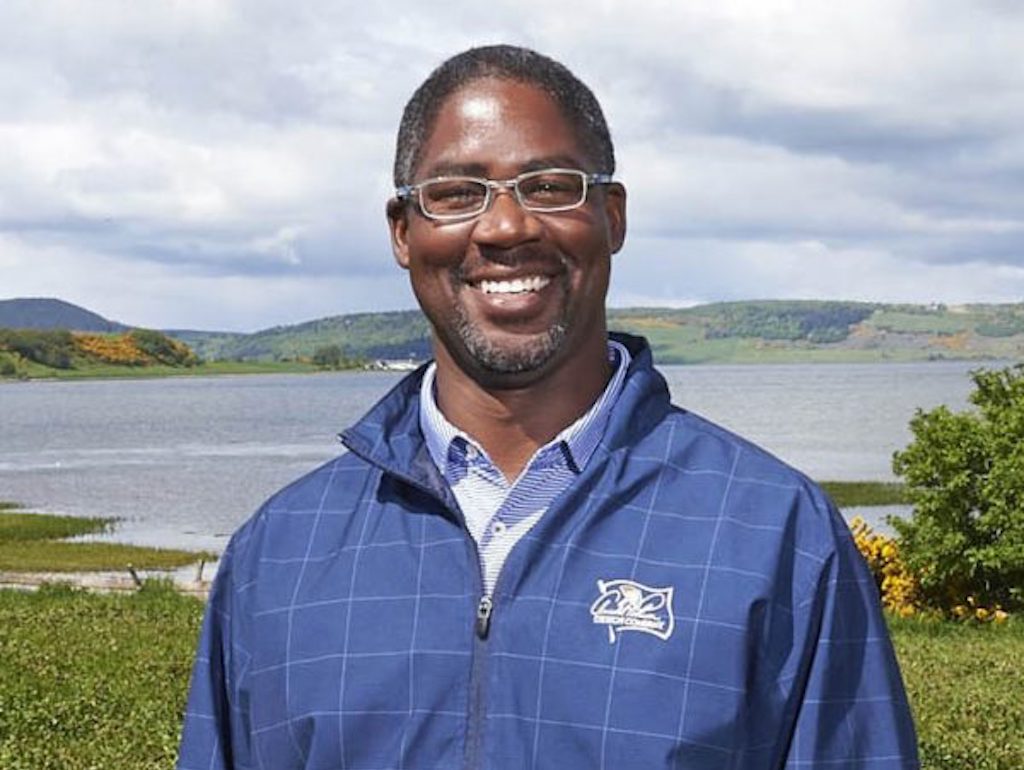
If you’ve followed my GolfWRX career arc, you know that I’m a fan of golf course architecture. I’ve had the opportunity to interview Bill Coore and Tom Doak, discuss course strategy with Scott Witter, Chris Wilczynski, Keith Rhebb and others. Each one is a unique talent, and has left a decided and positive mark on the game of golf on planet Earth. However, this is the first opportunity that I have had to interview a one-of-a-kind golf course architect. I won’t say any more about why he is one of a kind; you’ll soon figure it out. Brandon Johnson currently works in the employ of the Arnold Palmer Design Company. Without any delay, enjoy nine questions with Mr. Johnson.
1. Tell us a bit about yourself, and how golf came to be a part of your life.
BJ: I’m the son of an electrical engineer and school teacher, little brother to my sister, a devoted husband, a father of two wonderful kids, a special needs cat and someone who loves all kinds of good cuisine.
Music has always been a central part of my life. My dad played several instruments plus joined The Spiritual Renaissance Choir later in his life, my mom played the piano and has a beautiful voice, and my sister played the cello. My first desire was to play the saxophone like my Dad but when the saxophone section was full by registration time I decided to follow in my sister’s footsteps and play the cello.
The cello was my primary instrument as I played in organized orchestras from grade school through graduate studies and received a minor in music at NCSU along the way. My parents arranged piano lessons for several years, enjoyed the instrument and wish to this day I had continued. One reason had to be my fascination with the drums. During my 9th-10th grade years I began playing the drums and joined two local neighborhood garage bands. Fun times!! As an adult I’ve enjoyed my struggle to learn how to play the acoustic guitar.
Playing and competing in sports has always been a hobby. Before golf started to consume all my attention playing organized soccer, baseball, or pickup basketball with friends in the neighborhood kept me active.
Golf became my main focus when I was 12. One summer day my friend invited me to play. We went to the now extinct Sharon Golf Club, paid our three dollar greens fee and dribbled the ball on the hard pan fairways all day. My fascination, intrigue and love for the game grew instantly and I proceeded to fill my summers, weekends and time after school at the golf course.
2. At what point in your life did you determine that golf course architecture was more than an interest?
BJ: Shortly after taking up the game, I developed a strong interest in seeing and learning about different courses. Playing and trying to get better was still the primary focus, and would be for several more years, but the seed had been planted. Like a lot of kids who played, my childhood dream was to become a PGA Tour professional. I missed that and being a rock star drummer by a mile!
Sketching and drawing was a hobby growing up and I owe that introduction and inspiration to my older sister who is the true artistic talent in the family. My sketch subjects were objects and themes I found interesting. Soon those drawings of still life scenes, cars, pretend inventions and cartoon figures, turned into golf holes from the coffee table book “Golf Courses of the PGA Tour” that my parents gave me for Christmas. New golf hole ideas and routings soon followed.
By high school I began to contemplate college options, potential career paths and interesting majors to pursue. Right or wrong, I was counseled to take technical drafting instead of continuing art classes. While not the ideal foundation for an aspiring golf course architect, it confirmed my suspicion that engineering and building architecture was going to be too rigid for me. Drafting class wasn’t a total loss as it was helpful in learning how to draw and read technical plans but more importantly to visualize, in this case objects, in 3D.
My interest in art, nature, architecture and love of golf led me to blindly pursue a degree in Landscape Architecture as a way to become a golf course architect.
In retrospect, I was fortunate to even get into the NC State School of Design. NC State was the only Undergraduate program that incorporated an interview and portfolio of artwork as part of the admissions process. Little did I know, it was a competitive program and they were searching for artistic talent. I cobbled together my sketches from 7th and 8th-grade art class along with one of my sketch routing plans to round out my portfolio of technical drafting drawings. The jury must have seen my love for golf and the excitement in my face when explaining the details of my conceptual routing plan.
Attending NC State would prove to be a wonderful experience and career-defining decision.
3. As you moved toward a career in GCA and design, which architects inspired you?
BJ: In golf course architecture my initial inspiration was sparked from two very different eras, Pete Dye, and later Mike Stranz, being the ultimate modern architects, and Donald Ross coming from golf architectures early defining era.
Seeing the work of Pete Dye on PGA Tour telecasts, mainly TPC Sawgrass and Harbour Town growing up, sparked my interest in golf course design. I used to record the telecasts and replay the pros’ swings in slow motion, or pause certain positions, as a way to learn the golf swing and improve my game. When TPC Sawgrass or Harbour Town was on, I found myself looking at the architecture in the background of those still or slow motion images. What was so striking on the screen was radically different from the courses I had access to. I became hooked, even obsessed with the game, and the architecture that was influencing the shots required to play it. That spark of interest grew and led me to pursue golf course architecture as a career.
I came to know and appreciate the work of Donald Ross through one of his lessor known courses. He is credited with the front nine at Fort Mill Golf Club. (George Cobb designed the back nine) My friends and I first played Fort Mill during a practice round for a junior event named after my first golf pro Walter Renyolds. It was a fun and solid front nine with an efficient route over gentle terrain. Learning to tackle those slick, crowned, and tilted greens under tournament pressure was a daunting task! We used to play there several times during the summers and also venture out to Lancaster and Chester also credited to Ross.
The work of Mike Stranz has been a huge source of inspiration too. His work stands in a category of its own with how dramatic, fanciful, artistic and daring it is. The visual presentation of his bold sweeping forms, contours and horizon lines, in my opinion, are some of the most memorable “created” holes in golf. His work is more than just optics as they are a blast to play and full of contour, variety and strategic interest.
I first saw Tobacco Road the day after playing Pinehurst #2 for the first time. (Years before the Coore & Crenshaw restoration) The two experiences couldn’t have been more different. I’ve seen several more Stranz original works and look forward to seeing all of them one day soon.
Inspiration can and should be drawn from all kinds of sources. The study of nature and landforms helps to inspire the creation of contours and features that best emulate it. As a student studying Landscape Architecture I was drawn to historic landscapes, gardens and urban city centers. Invaluable design insight and inspiration was gained from personal experiences at all the major English, French, Italian and Spanish landscapes. Even golf architecture’s current natural, links or rugged design vs the manicured or parkland experience can be traced back to identical debates early practitioners had concerning the ideal or preferred English landscape or garden.
Non-golf and non-landscape architecture inspiration helps expand the mind too. The building architect Anton Gaudi is one of my favorites, artists like the Impressionists, Salvador Dali, M.C. Escher, and music from the Baroque Era to the present, in my opinion, are all excellent sources of material to study that sheds light on how other artists use a process, creatively solve problems, and break away from confining historic norms and traditions to push their craft forward and develop new interpretations of their art form.
There is a plethora of interesting golf architecture in the world, old and historic to new and modern. It is important to look back, study and draw inspiration from historic architecture to discover and learn about the architects and courses of the “Golden Age” but that should not be a binding principle. Exploring modern and contemporary golf architecture is equally as important, maybe even more important if golf is to find and develop new horizons.
It is essential to keep looking forward as the game continues to evolve. The “Golden Age” architects defined the architecture of their time, Pete Dye ushered in a new era appropriate for his time and our generation should continue to look forward to discover the appropriate architecture for tomorrow. At some level, it will always be inspired by or in reaction to its history but the players and technology of today are different from the players and technology from 100 years ago. Golf architecture needs to creatively bridge the two eras to progress and I look forward to the fun challenge of developing my unique interpretation.
4. Your first stop was as design coordinator for The First Tee. What did that position include and what projects resulted?
BJ: After completing two internships at the PGA Tour Design Services office and one as a member of the construction crew at TPC Deere Run the position at The First Tee became available. Even though the industry was buzzing no one seemed to be hiring. I knocked on a ton of architect’s doors, made phone calls and sent numerous resumes but never got an answer. This was my only viable professional option to get into golf architecture at the time.
The First Tee was still an unproven and undefined concept when I started but it had the full weight of the industry behind it. My initial role was to serve as a clearinghouse and primary point of contact for TFT Regional Directors, their emerging chapters and the golf industry. It was a wonderful opportunity for me to be housed out of the PGA Tour Design Services office, learn from their staff and process yet be somewhat independent on TFT projects. I traveled the entire country consulting with our chapters and the local officials they were partnering with, evaluating all kinds of potential sites, creating and evaluating budgets, project schedules and anything else associated with setting up projects. It evolved into a mountain of concept and construction plan production for all these different sites I was visiting. The effort and timeline required to getting a project from its inception to completion is arduous and long. Unfortunately, several really wonderful opportunities were never completed or moved forward after I left.
For 7 years I worked with TFT of Connecticut on multiple sites around Hartford, additional holes at existing courses, short courses, practice facilities, you name it. TFT Connecticut was connected to the PGA Tour event, TPC River Highlands and had plans for a statewide facility. Adjacent to the TPC River Highlands was an old quarry pit and field used for parking. We had some thoughtful and interesting plans to use that space for a facility that simultaneously fixed the inadequate practice facility at the club and other tournament set up issues as part of a joint partnership. Just as my time with TFT was ending the project was finally gaining momentum.
Coincidentally, they eventually completed the project with a former Palmer Design Associate that started with The Tour as I was departing. The driving range portion remained from my efforts but the configuration of the practice holes are different.
There is a similar story with TFT Chattanooga. I must have looked at six or seven sites and produced even more conceptual plans, budgets, schedules with them. We had an interesting brownfield site connected with a new community development project that would have included a wildly natural and fun 9-hole course and short game/short course and practice facility. I’ve always dreamt, even hoped, that one day I’d get a call that the project would move forward. It had the potential to be a model for how golf and great golf course architecture could be the catalyst for responsible environmental remediation, development and become a positive focal point for the community.
Milan Moore with PGA Tour Design completed the practice facility portion of the TFT Pueblo project that occupied a large portion of my time at TFT. I’m not sure if they ever completed the nine-hole course designed to accompany it.
There were tons of other interesting projects and odds and ends. A few projects of note did come to fruition. One larger project that I worked on was the Thunderbirds Golf Course, later renamed Vistal in Phoenix, Arizona. We completely redesigned an existing 18-hole course. Sadly, it no longer exists. The renovation of the municipal golf course El Rio Alvarez in Tucson, Arizona was another fun and successful project. Ken Kavanaugh and I worked together on revitalizing that local gem. I did some master planning and consulting for the City Courses in Shreveport, Louisiana and oversaw an extremely low budget greens project at Querbes. The additional master plan work on the other course(s) showed promise but they never materialized past the concept stage.
5. You made the move from TFT to Palmer Design. What compelled that decision?
BJ: Personally it was a very difficult decision to make because I really loved working for The First Tee, working with and learning from some of the most knowledgeable, passionate, and kind-hearted individuals I know who dedicated their lives to making golf a more accessible game.
We had a special group back then and I’m proud to have contributed to the cause. The bonus was developing so many wonderful friendships along the way, friendships that will last a lifetime.
The First Tee was growing rapidly and evolving in those early years. What was once a facility-based effort was now changing as the Life Skills programming was becoming the focus and backbone of the organization. Professionally, I had a once in a lifetime opportunity. One, to work for and directly with Arnold Palmer, a man I respected and admired and two, to grow as a designer/architect while also contributing to the company and its forward evolution by sharing my own thoughts, ideas and experiences. There are not too many opportunities in this industry so, when Thad Layton informed me the company was moving to Orlando from Ponte Vedra Beach, FL and there might be an opening, I knew I needed to investigate the opening door.
Oddly enough a lot of the tradition-breaking proposals and designs we are seeing today that receive so much praise and attention, short courses, alternate route configurations, non 9 or 18 configurations, duel use spaces between practice holes/short game areas/driving ranges, putting courses and proper forward tee options, were all ideas and concepts TFT and its chapters were advocating for in its facility-based models. We received some resistance to these ideas. Some didn’t think it was “real golf”, others could not find a way to make the operations and economics work. I’m glad to see the public and industry embrace them more today. We have some fun and exciting plans in the hopper that would add to the conversation when the projects more forward.
6. How long have you been with Palmer design, and to which projects have you contributed most?
BJ: I started in August of 2006 so it will be 14 years in just under a month. Below is a selected short list of projects:
-NCSU – Lonnie Poole Golf Course (my Alma mater…Go Pack!)
-Pure Scene – Kunming China
-Bay Hill Renovation (It was a team effort but Thad and I took the lead)
-Wexford Renovation
-Spring Island – Old Tabby Links Renovation
-PGA National – Palmer Course Renovation (2007 and 2018)
-Lakewood National (Commander and Piper Courses)
7. Which have been your favorite holes, or parts of holes, that hold your signature?
BJ: I’m glad you didn’t restrict me to just one favorite course, hole or feature! It’s nearly an impossible task to distill the canon of interesting architecture and features down to “one” favorite.
It is even challenging to compile a complete list of favorites as something you, or others, find worthy of inclusion will invariably be left out.
I recently wrote an article for the July 2020 issue of Golf Architecture Magazine about a select few of my “Favorite Features” that I’ve studied and experienced over the years. One or two of them might not be typical or obvious while others should have wide consensus.
Having a “signature” might not be accurate but there are strategic principles that form and guide my thinking and thoughts or ideas I enjoy discovering on properties or incorporating into holes. Below is a short sample:
-“Meaningful Width”
– Greens and green sites that use angle, contour and a variety of pin locations that influence tee shot and approach shot decision making
-Contending with obscured or blind approach shots. Especially when they are the consequence of avoiding challenging the ideal line due to a well-placed hazard or feature.
– Contours the feed, collect and shed the ball
Favorite Holes
#8 Wexford – It is one of the shorter Par 5 holes at Wexford. The majority of players should be able to get close to the green in two and those with slightly above average length should experience a high rate of success going for the green in two, especially when the course is playing firm and fast.
I’ve always been drawn to this hole for its simplicity and how subtle and nuanced the strategic requests are yet how important it is to recognize those clues, plan, and position shots accordingly or deal with the potentially disastrous ramifications of being out of position.
The foundation of my changes during the 2011 renovation were simple. Nudge the green slightly to the right, eliminate the large, flat fairway bunkers that only gobbled errant shots, and convert that space to fairway. These simple moves now incorporated an existing stand of tall pine trees found just beyond the landing area on the right and injected layers of strategy the previous version lacked.
A small singular bunker signifies the ideal line down the left side of the fairway. This opens up the best view and angle to challenge the three center line cross bunkers for your lay up or attempt to reach the green in two. Tee shots that drift too far right risk being partially blocked out by the trees or having to negotiate over hanging limbs to get back into position.
The small square shaped green, with an elevated front left pin nestled against a front left bunker is gently pitched going away from the player. A medium depth swale fronts the right portion of the green. A counter intuitive leave long will avoid tricky recovery situations and allow the player to use contour to their advantage. The same contour that defends the aggressive play in two or the deft pitch after a lay-up.
#12 Pure Scene
Working in China was fun, interesting, challenging and one of the most enlightening experiences in my professional career. There is a long back story to completing the course and this hole, one that I won’t expand upon here. After a frantic call from our client explaining how new government regulations would drastically change our routing during the middle of construction and that we needed to be on site in two days, we found this hole.
A short to mid length Par 3 with the beautiful Lake Dianchi in the background. I like how the back left pin location just dangles on the cliff edge.
#15 Pure Scene
Another hole with a long back story resulting from a different set of circumstances that forced us to depart from our original routing.
This short drivable par 4 has a massive and inviting fairway with a green at the final destination that ranks as one of the smallest I’ve ever built. (#9 at Wexford is another contender) The narrow sliver of green sits on the edge of the hill/cliff side with an infinity view to the country side beyond. The prevailing wind will play a factor here assisting tee shots down the right side for the better angle while also bringing the far cliff edge into play. Contours allow tee shots to drift farther off line long and/or left resulting in short, down prevailing wind pitches to a very narrow and shallow green. Long left approach and recovery shots to a back pin must navigate confounding contours. Bold and smart plays will lead to success here.
#11 Old Tabby Links
We altered this hole the most during our 2012 renovation of Spring Island – Old Tabby Links.
This hole provides the membership with variety and choice. We kept the left and right tee options but made sure they looked and played different. We retained the original yardages on the left tee complex and shortened/converted play from the right tee angle into a drivable Par 4. Width, centerline bunkers, obscured views from select angles, and pin locations that bring different contours or features into play depending on the angle of approach make this hole interesting and fun to play.
Favorite Features or parts of a hole
#4 NCSU – Lonnie Poole Golf Course – We found and utilized the natural ground contour as the main strategic feature of the hole. One can ride the ridge, past the left cross bunker onto the green with a well-placed shot or have that same ridge shed balls further left behind the bunker or right into a swale leaving a tricky angled pitch.
#5 NCSU – Lonnie Poole Golf Course – The combination of utilizing the bold, natural rolling terrain, protruding right tree line and extended fairway cut to the far right and left extremes creates, in my opinion, a fun tee shot where local knowledge is key. (The original fairway line extended farther right then the one they mow currently) One can be lulled to sleep here thinking there is gracious space at the landing area but favoring the left half with a well-positioned ball, or blowing it over and/or past the tree line if you’re long enough, are the best plays.
#5 Lakewood National-Commander Course (Back Right Pin and Green surround) – The main defending feature of the green and complex is the back right, thimble sized, dome with a devilish pin location on top. No bunkers guard this green, just the long pond down the left side of a fairway that is plenty generous for one to confidently avoid a watery disaster. A ridge tumbles down beyond a diagonal cross bunker on the right, approximately 85 yards out, providing a safe and effective way to avoid the lake while still accessing the green and front pin locations. The fun, challenge and decision making begins when that feeding ridge is over played and balls funnel down behind this back dome.
During the Korn Ferry Suncoast LECOM Classic a Feb 16, 2019 tweet on my account and Thad Layton’s, my design partner, shows the dilemma of being on the wrong side of this contour. What the video does not show is 1) His playing partner, who was in the exact same spot, successfully nestle his recovery next to the hole for a birdie. 2) The mental deliberation both players went through to try and figure out the best play.
Position is key as I’ve utilized this dome contour from a different angle to escape being out of position on the lake bank and feed a ball down to the back left pin next to the water.
8. Describe for us the perfect place to build a golf course.
BJ: First, I know some stunning sites in the U.S. and in different locations around the globe that we believe would be perfect or “ideal” ground for golf. They just need the right partners, organization and/or investments. As an architect always in search of ideal projects to devote all our time towards and channel our passion and creativity into, I’d be missing an opportunity if I didn’t float those opportunities into the universe!
The first instinctive thought, and where the majority of golf architecture might fall back on, are origins in wind swept, sandy dunescapes with wispy fescue and marram grasses blanketing rumpled and wrinkled terrain that’s been perfectly sculpted over decades by nature’s masterful touch. It is hard to find fault with this setting.
Adding a raucous ocean battering a shoreline of both rocky cliff edge and sandy dunes to anchor the site and serve a dual role as the ultimate hazard and sublime vista only makes it better.
Ideally, the accompanying landscape palette would be native yet unique. A palette so full and rich with variety that evolves across the site. The routing would take you on an exploratory journey of the sites highlight reel, incredible views overlooking the most majestic, distant and unspoiled landscapes, intimate and cozy outdoor rooms whose features almost engulf you and then burst into another stunning landscape.
There are other factors to consider though. Climate – my preference would be a location with majority days of sunshine, warm, but not too hot. Certainly not muggy or humid. Mild to cool mornings that warm up to comfortable temperatures where shorts or lose long pants are comfortable. (68F – 78F) Perhaps a bit of breeze that, depending on the season or global weather patterns, doesn’t produce a predictable prevailing wind.
Taking your question a little further into a dream scenario, a place where the summer solstice was the norm and not a one-day a year occurrence would be perfect! This would allow for the maximum number of rounds to be played. Players could structure days to take advantage of the daylight, play nine before the work day starts and nine or 18 in that wonderful glow of evening light.
The added bonus of no flies, mosquitos, no-see-ums or other tiny biting insects that cause distress would really make it perfect! Do you know such a place?
One of the reasons I believe golf is the ultimate game and chess match is that our field of play is constantly changing. Chess is a wonderful cerebral game filled with an infinite number of combinations and strategies, but the board and pieces remain the same. The natural ground upon which we play and compete in golf embodies so much variety and character. Ever changing weather conditions play a pivotal role in every golf round thus making the physical, mental and strategic requests that much more complex. Exceptional golf architecture, and how it interprets the varied ground upon which it rests, is a beautiful process and one that creates several versions of the “perfect” location. Inspired architecture on stunning foothill terrain with wildflower fields and snow-capped mountain backdrops on glacier formed contours (with cool water running over smooth pebbles in a creek bed) can be every bit has beautiful and captivating as architecture on a course intertwined in the rugged desert landscape or the traditional ideal seaside links course with massive dunes, marram grass and fescue waving in the breeze.
As an architect I love being inspired by the site and the challenge of finding and unlocking golf holes on that precious land and interpreting how ideal golf could be played over it in new fresh forms.
9. What question have we not asked, that you wish we had? Ask it and answer it, please.
BJ: A few years ago, Digital Links Magazine asked, “As an African-American, have you ever experienced any difficulties working in the golf industry?” An appropriate question three years ago and perhaps even more timely in today’s social and cultural climate. While I appreciated the question, and that someone generally cared about my experience, I also struggled with the question. It was a short answer interview format, this was the first time any writer or journalist asked me such a question, so I wrestled to answer this question that needed a more robust and contextualized conversation surrounding it.
I won’t expand upon that original answer here, nor ask another question, but I will use it has reference and context for a broader statement because the greater, more contextualized conversation goes far beyond my personal experiences.
“There were many pioneers in golf’s history who blazed trails, broke down cruel access barriers and endured tremendous hardships to play and enjoy the game they loved as equals to everyone in society. Golf owes them a huge debt of gratitude. Everyone has to overcome obstacles and blockades in life, I’ve had my fair share, but because of those heroic efforts my personal experience and exposure to the game was much different than theirs. I’m fortunate to have had so many generous people help, support, encourage and guide me from day one to the present. Any success I’ve experienced can be attributed to their helping hands.
While our society has evolved we must still recognize that we are not perfect and this wonderful game of golf that we love and are so passionate about, can and should, be more inclusive and representative of the world’s rich and diverse cultural, ethnic, racial and gender makeup.
I hope to help make this a reality.”
As you reached out to me to participate in this interview our nation, and eventually the greater international community, was engulfed in the raw, emotional reaction to the brutal and unnecessary death of George Floyd. The country was just beginning to tear off the final scabs of racial injustice and inequity wounds that have festered below the surface and plagued our countries history for too many generations.
This event sparked an unprecedented national conversation and collective grappling with our countries historical and current understanding of how race, racism and racial inequity continues to influence and shape every sector of our society. A modern realization that the racial, ethnic, cultural, religious and socio-economic divide still exists and is wider than most believed, experienced or cared to realize until now. This is a hard truth and reality to resolve but one we must all face in order to move forward, together, and forge a new history that will be unburdened by its past.
The game of golf is beautiful. The game of golf is elegant. The game of golf is a connector. Wonderful friendships and experiences that cross racial, ethnic and cultural lines are formed and nurtured through participation in the game. There is nothing wrong with the game of golf. Unfortunately, the history of golf and its governance, is as equally entangled with the racial inequity and injustices of its time as the rest of our nation.
Yes, golf and its governing bodies have eliminated the nonsensical segregation rules and clauses that once wrongfully guided our pure game. That was an obvious and easy first step but not one that crumbled the foundation behind those practices or eliminated the impacts that years of inequitable treatment caused. Unfortunately, the continued government, management, operation and economics that structure our great game continue to be tainted by its history of racial, ethnic, religious and gender exclusion practices whose remnants still remain embedded within despite recent efforts to change.
Golf needs to fully reconcile its history of racial exclusion and reluctance to evolve in a multi-cultural society. Only then can we fully understand how the residue of past laws, practices and social, cultural and economic biases continue to stifle meaningful forward progress. When this occurs golf will be freed to move forward and thrive like never before.
I encourage the greater golf community, public golf and private member participants, elite players to the long handicap, and industry leaders to the wider golf market to help transform this game we all claim to love so dearly, into a welcoming, inclusive, vibrant game that is rich with the diversity and talent of our world. A game and structuring industry that supports golf and leads society to be a better version of itself.
Is this too much to ask of a game? A sport? NO. Not a sport as beautiful as golf. Not a sport whose participants extol the virtues of sportsmanship, integrity, honesty and personal enforcement of competitive rules. It is not too much to ask of a sport that raises BILLIONS of charitable dollars for communities and causes around the globe. It is time for the collective golf community to demonstrate how, through sport and the life long bonds created from it, will play a vital role in eradicating systemic racism and lead change towards a peaceful, diverse and inclusive society.
- LIKE34
- LEGIT9
- WOW9
- LOL0
- IDHT1
- FLOP0
- OB0
- SHANK0
19th Hole
Vincenzi’s 2024 PGA Championship betting preview: Rising star ready to join the immortals at Valhalla

The second major of the 2024 season is upon us as the world’s best players will tee it up this week at Valhalla Golf Club in Louisville, Kentucky to compete for the Wanamaker Trophy.
The last time we saw Valhalla host a major championship, Rory McIlroy fended off Phil Mickelson, Henrik Stenson, Rickie Fowler and the creeping darkness that was descending upon the golf course. The Northern Irishman had the golf world in the palm of his hand, joining only Tiger Woods and Jack Nicklaus as players who’d won four major championships by the time they were 25 years old.
Valhalla is named after the great hall described in Norse mythology where the souls of Vikings feasted and celebrated with the Gods. The course is a Jack Nicklaus-design that has ranked among Golf Digest’s “America’s 100 Greatest Courses” for three decades.
Valhalla Golf Club is a par-71 measuring 7,542 yards with Zoysia fairways and Bentgrass greens. The course has rolling hills and dangerous streams scattered throughout and the signature 13th hole is picturesque with limestone and unique bunkering protecting the green. The 2024 PGA Championship will mark the fourth time Valhalla has hosted the event.
The field this week will consist of 156 players, including 16 PGA Champions and 33 Major Champions.
Past Winners of the PGA Championship
- 2023: Brooks Koepka (-9) Oak Hill
- 2022: Justin Thomas (-5) Southern Hills
- 2021: Phil Mickelson (-6) Kiawah Island
- 2020: Collin Morikawa (-13) TPC Harding Park
- 2019: Brooks Koepka (-8) Bethpage Black
- 2018: Brooks Koepka (-16) Bellerive
- 2017: Justin Thomas (-8) Quail Hollow
- 2016: Jimmy Walker (-14) Baltusrol
- 2015: Jason Day (-20) Whistling Straits
- 2014: Rory McIlroy (-16) Valhalla
In this article and going forward, I’ll be using the Rabbit Hole by Betsperts Golf data engine to develop my custom model. If you want to build your own model or check out all of the detailed stats, you can sign up using promo code: MATTVIN for 25% off any subscription package (yearly is best value).
Key Stats For Valhalla
Let’s take a look at five key metrics for Oak Hill to determine which golfers boast top marks in each category over their past 24 rounds.
1. Strokes Gained: Approach
Valhalla will play as a true all-around test of golf for the world’s best. Of course, it will take strong approach play to win a major championship.
Strokes Gained: Approach Over Past 24 Rounds
- Shane Lowry (+1.25)
- Scottie Scheffler (+1.09)
- Jordan Smith (+1.05)
- Tom Hoge (+.96)
- Corey Conners (+.94)
2. Strokes Gained: Off the Tee
Valhalla will play long and the rough will be penal. Players who are incredibly short off the tee and/or have a hard time hitting fairways will be all but eliminated from contention this week at the PGA Championship.
Strokes Gained: Off the Tee Over Past 24 Rounds:
- Bryson DeChambeau (+1.47)
- Scottie Scheffler (+1.11)
- Keith Mitchell (+.90)
- Alejandro Tosti (+.89)
- Ludvig Aberg (+.82)
Strokes Gained: Total on Nickalus Designs
Valhalla is a classic Nicklaus Design. Players who play well at Nicklaus designs should have an advantage coming into this major championship.
Strokes Gained: Total on Nicklaus Designs over past 36 rounds:
- Jon Rahm (+2.56)
- Scottie Scheffler (+2.48)
- Patrick Cantlay (+2.35)
- Collin Morikawa (+1.79)
- Shane Lowry (+1.57)
Strokes Gained: Tee to Green on Very Long Courses
Valhalla is going to play extremely long this week. Players who have had success playing very long golf courses should be better equipped to handle the conditions of this major championship.
Strokes Gained: Total on Very Long Courses Over Past 24 Rounds:
- Scottie Scheffler (+2.44)
- Rory McIlroy (+2.24)
- Will Zalatoris (+1.78)
- Viktor Hovland (+1.69)
- Xander Schauffele (+1.60)
Strokes Gained: Total in Major Championships
One factor that tends to play a large role in deciding major championships is which players have played well in previous majors leading up to the event.
Strokes Gained: Total in Major Championships over past 20 rounds:
- Scottie Scheffler (+3.14)
- Will Zalatoris (+2.64)
- Rory McIlroy (+2.49)
- Xander Schauffele (+2.48)
- Tommy Fleetwood (2.09)
Strokes Gained: Putting on Bentgrass Greens
Valhalla features pure Bentgrass putting surfaces. Players who are comfortable putting on this surface will have an advantage on the greens.
Strokes Gained: Putting on Bentgrass Greens over Past 24 Rounds:
- Ludvig Aberg (+1.12)
- Denny McCarthy (+1.08)
- Matt Fitzpatrick (+0.99)
- Justin Rose (+0.93)
- J.T. Poston (0.87)
Strokes Gained: Total on Zoysia Fairways
Valhalla features Zoysia fairways. Players who are comfortable playing on this surface will have an advantage on the field.
Strokes Gained: Total on Zoysia Fairways over past 36 rounds:
- Justin Thomas (+1.53)
- Will Zalatoris (+1.47)
- Xander Schauffele (+1.40)
- Brooks Koepka (+1.35)
- Rory McIlroy (+1.23)
2024 PGA Championship Model Rankings
Below, I’ve compiled overall model rankings using a combination of the key statistical categories previously discussed — SG: Approach (25%), SG: Off the Tee (22%), SG: T2G on Very Long Courses (12%), SG: Putting on Bentgrass (+12%), SG: Total on Nicklaus Designs (12%). SG: Total on Zoysia Fairways (8%), and SG: Total in Major Championships (8%).
- Brooks Koepka
- Xander Schauffele
- Rory McIlroy
- Scottie Scheffler
- Bryson DeChambeau
- Shane Lowry
- Alex Noren
- Will Zalatoris
- Cameron Young
- Keith Mitchell
- Hideki Matsuyama
- Billy Horschel
- Patrick Cantlay
- Viktor Hovland
- Adam Schenk
- Chris Kirk
- Sahith Theegala
- Min Woo Lee
- Joaquin Niemann
- Justin Thomas
2024 PGA Championship Picks
Ludvig Aberg +1800 (BetMGM)
At The Masters, Ludvig Aberg announced to the golf world that he’s no longer an “up and coming” player. He’s one of the best players in the game of golf, regardless of experience.
Augusta National gave Aberg some necessary scar tissue and showed him what being in contention at a major championship felt like down the stretch. Unsurprisingly, he made a costly mistake, hitting it in the water left of the 11th hole, but showed his resilience by immediately bouncing back. He went on to birdie two of his next three holes and finished in solo second by three shots. With the type of demeanor that remains cool in pressure situations, I believe Ludvig has the right mental game to win a major at this point in his career.
Aberg has not finished outside of the top-25 in his past eight starts, which includes two runner-up finishes at both a “Signature Event” and a major championship. The 24-year-old is absolutely dominant with his driver, which will give him a major advantage this week. In the field he ranks, in Strokes Gained: Off the Tee, and has gained strokes in the category in each of his past ten starts. Aberg is already one of the best drivers of the golf ball on the planet.
In Norse mythology, Valhalla is the great hall where the souls of Vikings feasted and celebrated with the Gods. The Swedes, who are of Old Norse origin, were the last of the three Scandinavian Kingdoms to abandon the Old Norse Gods. A Swede played a major role in the 2014 PGA Championship at Valhalla, and I believe another, Ludvig Aberg, will be the one to conquer Valhalla in 2024.
Bryson DeChambeau +2800 (BetMGM)
Bryson DeChambeau is one of the few players in the world that I believe has the game to go blow-for-blow with Scottie Scheffler. Although he isn’t as consistent as Scheffler, when he’s at his best, Bryson has the talent to beat him.
At The Masters, DeChambeau put forth a valiant effort at a golf course that simply does not suit his game. Valhalla, on the other hand, is a course that should be perfect for the 30-year-old. His ability to overpower a golf course with his driver will be a serious weapon this week.
Bryson has had some success at Jack Nicklaus designs throughout his career as he won the Memorial at Muirfield Village back in 2018. He’s also had incredible results on Bentgrass greens for the entirety of his professional career. Of his 10 wins, nine of them have come on Bentgrass greens, with the only exception being the Arnold Palmer Invitational at Bay Hill. He also has second place finishes at Medinah and TPC Summerlin, which feature Bentgrass greens.
Love him or hate him, it’s impossible to argue that Bryson isn’t one of the most exciting and important players in the game of golf. He’s also one of the best players in the world. A second major is coming soon for DeChambeau, and I believe he should be amongst the favorites to hoist the Wanamaker Trophy this week.
Patrick Cantlay +4000 (FanDuel)
There’s no way of getting around it: Patrick Cantlay has been dissapointing in major championships throughout his professional career. He’s been one of the top players on Tour for a handful of years and has yet to truly contend at a major championship, with the arguable exception of the 2019 Masters.
Despite not winning majors, Cantlay has won some big events. The 32-year-old has won two BMW Championships, two Memorial Tournaments as well as a Tour Championship. His victories at Memorial indicate how much Cantlay loves Nicklaus designs, where he ranks 3rd in the field in Strokes Gained: Total over his past 36 rounds behind only Scottie Scheffler and Jon Rahm.
Cantlay also loves Bentgrass greens. Six of Cantlay’s seven individual wins on the PGA Tour have come on Bentgrass greens and he also was one of the best putters at the 2023 Ryder cup at Marco Simone (also Bentgrass). At Caves Valley (2021 BMW Championship), he gained over 12 strokes putting to outduel another Bentgrass specialist, Bryson DeChambeau.
Cantlay finished 22nd in The Masters, which was a solid result considering how many elite players struggled that week. He also has two top-ten finishes in his past five PGA Championships. He’s undeniably one of the best players in the field, therefore, it comes down to believing Cantlay has the mental fortitude to win a major, which I do.
Joaquin Niemann +4000 (BetMGM)
I believe Joaquin Niemann is one of the best players in the world. He has three worldwide wins since December and has continued to improve over the course of his impressive career thus far. Still only 25, the Chilean has all the tools to be a serious contender in major championships for years to come.
Niemann has been the best player on LIV this season. Plenty will argue with the format or source of the money on LIV, but no one can argue that beating players such as Jon Rahm, Bryson DeChambeau, Dustin Johnson, Brooks Koepka and Cameron Smith is an unremarkable achievement. Niemann is an elite driver of the golf ball who hits it farther than just about anyone in the field not named Bryson DeChambeau or (arguably) Rory McIlroy.
Niemann is another player who has been fantastic throughout his career on Bentgrass greens. Prior to leaving the PGA Tour, Bentgrass was the only green surface in which Joaco was a positive putter. It’s clearly a surface that he is very comfortable putting on and should fare around and on the greens this week.
Niemann is a perfect fit for Valhalla. His low and penetrating ball flight will get him plenty of runout this week on the fairways and he should have shorter shots into the green complexes than his competitors. To this point in his career, the former top ranked amateur in the world (2018) has been underwhelming in major championships, but I don’t believe that will last much longer. Joaquin Niemann is a major championship caliber player and has a real chance to contend this week at Valhalla.
- LIKE37
- LEGIT15
- WOW4
- LOL1
- IDHT1
- FLOP4
- OB3
- SHANK17
Opinion & Analysis
The Wedge Guy: What really makes a wedge work? Part 2

In my last post, I explained the basic performance dynamics of “smash factor” and “gear effect” as they apply to your wedges and your wedge play success. If you missed that post, you can read it here.
At the end of that post, I promised “part 2” of this discussion of what makes a wedge work the way it does. So, let’s dive into the other two components of any wedge – the shaft and the grip.
It’s long been said that the shaft is “the engine of the golf club.” The shaft (and grip) are your only connection to all the technologies that are packed into the head of any golf club, whether it be a driver, fairway, hybrid, iron, wedge or even putter.
And you cannot ignore those two components of your wedges if your goal is optimizing your performance.
I’ve long been an advocate of what I call a “seamless transition” from your irons into your wedges, so that the feel and performance do not disconnect when you choose a gap wedge, for example, instead of your iron-set-matching “P-club.” In today’s golf equipment marketplace, more and more golfers are making the investment of time and money to experience an iron fitting, going through trial and error and launch monitor measuring to get just the right shaft in their irons.
But then so many of those same golfers just go into a store and choose wedges off the retail display, with no similar science involved at all. And that’s why I see so many golfers with a huge disconnect between their custom-fitted irons, often with lighter and/or softer graphite or light steel shafts . . . and their off-the-rack wedges with the stock stiff steel ‘wedge flex’ shaft common to those stock offerings.
If your wedge shafts are significantly heavier and stiffer than the shafts in your irons, it is physically impossible for you to make the same swing. Period.
To quickly improve your wedge play, one of the first things you can do is have your wedges re-shafted with the same or similar shaft that is in your irons.
There’s another side of that shaft weight equation; if you don’t have the forearm and hand strength of a PGA Tour professional, you simply cannot “handle” the same weight shaft that those guys play to master the myriad of ‘touch shots’ around the greens.
Now, let’s move on to the third and other key component of your wedges – the grips. If those are not similar in shape and feel to the grips on your irons, you have another disconnect. Have your grips checked by a qualified golf club professionals to make sure you are in sync there.
The one caveat to that advice is that I am a proponent of a reduced taper in your wedge grips – putting two to four more layers of tape under the lower hand, or selecting one of the many reduced taper grips on the market. That accomplishes two goals for your scoring.
First, it helps reduce overactive hands in your full and near-full wedge swings. Quiet hands are key to good wedge shots.
And secondly, it provides a more consistent feel of the wedge in your hands as you grip down for those shorter and more delicate shots around the greens. And you should always grip down as you get into those touch shots. I call it “getting closer to your work.”
So, if you will spend as much time selecting the shafts and grips for your wedges as you do choosing the brand, model, and loft of them, your scoring range performance will get better.
More from the Wedge Guy
- The Wedge Guy: What really makes a wedge work? Part 1
- The Wedge Guy: The easiest-to-learn golf basic
- The Wedge Guy: Golf mastery begins with your wedge game
- LIKE6
- LEGIT3
- WOW0
- LOL1
- IDHT1
- FLOP0
- OB0
- SHANK5
19th Hole
Vincenzi’s 2024 Wells Fargo Championship betting preview: Tommy Fleetwood ready to finally land maiden PGA Tour title

The PGA Tour season ramps back up this week for another “signature event,” as golf fans look forward to the year’s second major championship next week.
After two weaker-field events in the Zurich Classic and the CJ Cup Byron Nelson, most of the best players in the world will head to historic Quail Hollow for one of the best non-major tournaments of the year.
Last season, Wyndham Clark won the event by four shots.
Quail Hollow is a par-71 measuring 7,521 yards that features Bermudagrass greens. The tree-lined, parkland style course can play quite difficult and features one of the most difficult three-hole stretches in golf known as “The Green Mile,” which makes up holes 16-18: two mammoth par 4s and a 221-yard par 3. All three holes have an average score over par, and water is in play in each of the last five holes on the course.
The field is excellent this week with 68 golfers teeing it up without a cut. All of the golfers who’ve qualified are set to tee it up, with the exception of Scottie Scheffler, who is expecting the birth of his first child.
Past Winners at Quail Hollow
- 2023: Wyndham Clark (-19)
- 2022: Max Homa (-8)
- 2021: Rory McIlroy (-10)
- 2019: Max Homa (-15)
- 2018: Jason Day (-12)
- 2017: Justin Thomas (-8) (PGA Championship)
- 2016: James Hahn (-9)
- 2015: Rory McIlroy (-21)
Key Stats For Quail Hollow
Strokes Gained: Approach
Strokes gained: Approach will be extremely important this week as second shots at Quail Hollow can be very difficult.
Total SG: Approach Over Past 24 Rounds
- Akshay Bhatia (+1.16)
- Tom Hoge (+1.12)
- Corey Conners (+1.01)
- Shane Lowry (+0.93)
- Austin Eckroat (+0.82)
Strokes Gained: Off the Tee
Quail Hollow is a long course on which it is important to play from the fairway. Both distance and accuracy are important, as shorter tee shots will result in approach shots from 200 or more yards. With most of the holes heavily tree lined, errant drives will create some real trouble for the players.
Strokes Gained: Off the Tee Past 24 Rounds:
- Ludvig Aberg (+0.73)
- Rory McIlroy (+0.69)
- Xander Schauffele (+0.62)
- Viktor Hovland (+0.58)
- Chris Kirk (+0.52)
Proximity: 175-200
The 175-200 range is key at Quail Hollow. Players who can hit their long irons well will rise to the top of the leaderboard.
Proximity: 175-200+ over past 24 rounds:
- Cameron Young (28’2″)
- Akshay Bhatia (29’6″)
- Ludvig Aberg (+30’6″)
- Sam Burns (+30’6″)
- Collin Morikawa (+30’9″)
SG: Total on Tom Fazio Designs
Players who thrive on Tom Fazio designs get a bump for me at Quail Hollow this week.
SG: Total on Tom Fazio Designs over past 36 rounds:
- Patrick Cantlay (+2.10)
- Rory McIlroy (+1.95)
- Tommy Fleetwood (+1.68)
- Austin Eckroat (+1.60)
- Will Zalatoris (+1.57)
Strokes Gained: Putting (Bermudagrass)
Strokes Gained: Putting has historically graded out as the most important statistic at Quail Hollow. While it isn’t always predictable, I do want to have it in the model to bump up golfers who prefer to putt on Bermudagrass.
Strokes Gained: Putting (Bermudagrass) Over Past 24 Rounds:
- Taylor Moore (+0.82)
- Nick Dunlap (+.76)
- Wyndham Clark (+.69)
- Emiliano Grillo (+.64)
- Cam Davis (+.61)
Course History
This stat will incorporate players that have played well in the past at Quail Hollow.
Course History over past 36 rounds (per round):
- Rory McIlroy (+2.50)
- Justin Thomas (+1.96)
- Jason Day (+1.92)
- Rickie Fowler (+1.83)
- Viktor Hovland (+1.78)
Wells Fargo Championship Model Rankings
Below, I’ve compiled overall model rankings using a combination of the five key statistical categories previously discussed — SG: Approach (27%), SG: Off the Tee (23%), SG: Total on Fazio designs (12%), Proximity: 175-200 (12%), SG: Putting Bermuda grass (12%), and Course History (14%).
- Wyndham Clark
- Rory McIlroy
- Xander Schauffele
- Shane Lowry
- Hideki Matsuyama
- Viktor Hovland
- Cameron Young
- Austin Eckroat
- Byeong Hun An
- Justin Thomas
2024 Wells Fargo Championship Picks
Tommy Fleetwood +2500 (DraftKings)
I know many out there have Tommy fatigue when it comes to betting, which is completely understandable given his lack of ability to win on the PGA Tour thus far in his career. However, history has shown us that players with Fleetwood’s talent eventually break though, and I believe for Tommy, it’s just a matter of time.
Fleetwood has been excellent on Tom Fazio designs. Over his past 36 rounds, he ranks 3rd in the field in Strokes Gained: Total on Fazio tracks. He’s also been incredibly reliable off the tee this season. He’s gained strokes in the category in eight of his past nine starts, including at The Masters, the PLAYERS and the three “signature events” of the season. Tommy is a golfer built for tougher courses and can grind it out in difficult conditions.
Last year, Fleetwood was the first-round leader at this event, firing a Thursday 65. He finished the event in a tie for 5th place.
For those worried about Fleetwood’s disappointing start his last time out at Harbour Town, he’s bounced back nicely after plenty of poor outings this season. His T7 at the Valero Texas Open was after a MC and T35 in his prior two starts and his win at the Dubai Invitational came after a T47 at the Sentry.
I expect Tommy to bounce back this week and contend at Quail Hollow.
Justin Thomas +3000 (DraftKings)
It’s been a rough couple of years for Justin Thomas, but I don’t believe things are quite as bad as they seem for JT. He got caught in the bad side of the draw at Augusta for last month’s Masters and has gained strokes on approach in seven of his nine starts in 2024.
Thomas may have found something in his most recent start at the RBC Heritage. He finished T5 at a course that he isn’t the best fit for on paper. He also finally got the putter working and ranked 15th in Strokes Gained: Putting for the week.
The two-time PGA champion captured the first of his two major championships at Quail Hollow back in 2017, and some good vibes from the course may be enough to get JT out of his slump.
Thomas hasn’t won an event in just about two years. However, I still believe that will change soon as he’s been one of the most prolific winners throughout his PGA Tour career. Since 2015, he has 15 PGA Tour wins.
Course history is pretty sticky at Quail Hollow, with players who like the course playing well there on a regular basis. In addition to JT’s PGA Championship win in 2017, he went 4-1 at the 2022 Presidents Cup and finished T14 at the event last year despite being in poor form. Thomas can return as one of the top players on the PGA Tour with a win at a “signature event” this week.
Cameron Young +3500 (DraftKings)
For many golf bettors, it’s been frustrating backing Cam Young this season. His talent is undeniable, and one of the best and most consistent performers on the PGA Tour. He just hasn’t broken through with a victory yet. Quail Hollow has been a great place for elite players to get their first victory. Rory McIlroy, Anthony Kim, Rickie Fowler and Wyndham Clark all notched their first PGA Tour win at Quail.
Throughout Cam Young’s career, he has thrived at tougher courses with strong fields. This season, he finished T16 at Riviera and T9 at Augusta National, demonstrating his preference of a tough test. His ability to hit the ball long and straight off the tee make him an ideal fit for Quail Hollow, despite playing pretty poorly his first time out in 2023 (T59). Young should be comfortable playing in the region as he played his college golf at Wake Forest, which is about an hour’s drive from Quail Hollow.
The 26-year-old has played well at Tom Fazio designs in the past and ranks 8th in the field in Strokes Gained: Total on those courses in his last 36 rounds. Perhaps most importantly, this season, Young is the best player on the PGA Tour in terms of proximity from 175-200 in the fairway, which is where a plurality and many crucial shots will come from this week.
Young is an elite talent and Quail Hollow has been kind to players of his ilk who’ve yet to win on Tour.
Byeong Hun An +5000 (FanDuel)
Byeong Hun An missed some opportunities last weekend at the CJ Cup Byron Nelson. He finished T4 and played some outstanding golf, but a couple of missed short putts prevented him from getting to the winning score of -23. Despite not getting the win, it’s hard to view An’s performance as anything other than an overwhelming success. It was An’s fourth top-ten finish of the season.
Last week, An gained 6.5 strokes ball striking, which was 7th in the field. He also ranked 12th for Strokes Gained: Approach and 13th for Strokes Gained: Off the Tee. The South Korean has been hitting the ball so well from tee to green all season long and he now heads to a golf course that should reward his precision.
An’s driver and long irons are absolute weapons. At Quail Hollow, players will see plenty of approach shots from the 175-200 range as well as some from 200+. In his past 24 rounds, Ben ranks 3rd in the field in proximity from 175-200 and 12th in proximity from 200+. Playing in an event that will not end up being a “birdie” fest should help An, who can separate from the field with his strong tee to green play. The putter may not always cooperate but getting to -15 is much easier than getting to -23 for elite ball strikers who tend to struggle on the greens.
Winning a “signature event” feels like a tall task for An this week with so many elite players in the field. However, he’s finished T16 at the Genesis Invitational, T16 at The Masters and T8 at the Arnold Palmer Invitational. The 32-year-old’s game has improved drastically this season and I believe he’s ready to get the biggest win of his career.
- LIKE9
- LEGIT4
- WOW1
- LOL1
- IDHT1
- FLOP1
- OB0
- SHANK1
-
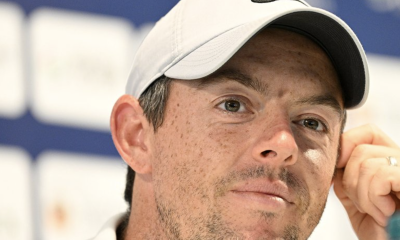
 19th Hole3 days ago
19th Hole3 days agoBrandel Chamblee says this is the primary reason why Rory McIlroy hasn’t won a major in 10 years
-

 Whats in the Bag4 days ago
Whats in the Bag4 days agoTiger Woods WITB 2024 (May)
-

 19th Hole2 weeks ago
19th Hole2 weeks agoReport: LIV star turns down PGA Championship invite due to ‘personal commitments’
-

 19th Hole2 weeks ago
19th Hole2 weeks agoGary Player claims this is what ‘completely ruined’ Tiger Woods’ career
-

 Equipment1 week ago
Equipment1 week agoDetails on Justin Thomas’ driver switch at the Wells Fargo Championship
-

 News1 day ago
News1 day agoScottie Scheffler arrested, charged, and released after traffic incident at Valhalla
-

 Whats in the Bag3 weeks ago
Whats in the Bag3 weeks agoTeam McIlowry (Rory McIlroy, Shane Lowry) winning WITBs: 2024 Zurich Classic
-

 Whats in the Bag2 weeks ago
Whats in the Bag2 weeks agoKeegan Bradley WITB 2024 (May)

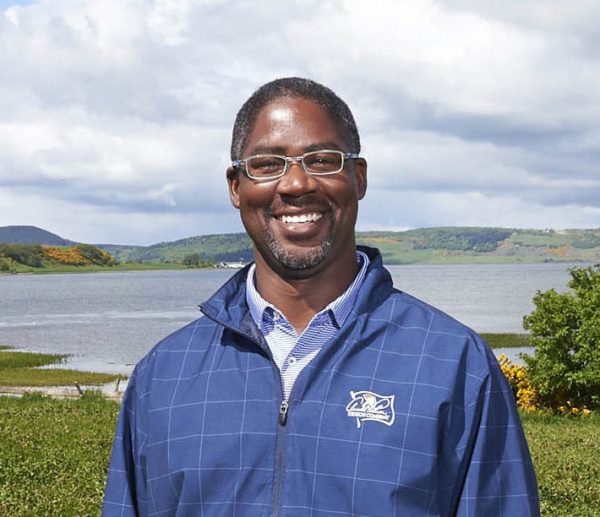

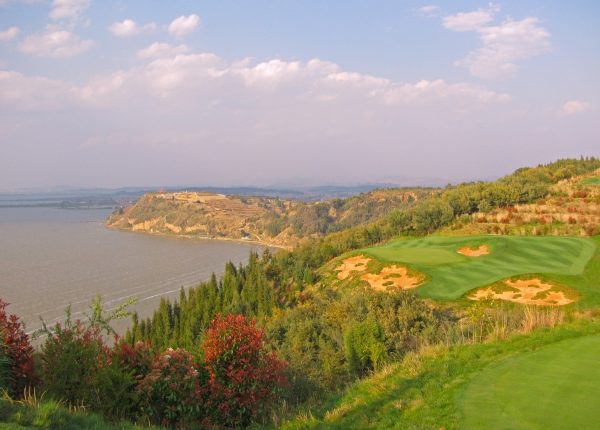
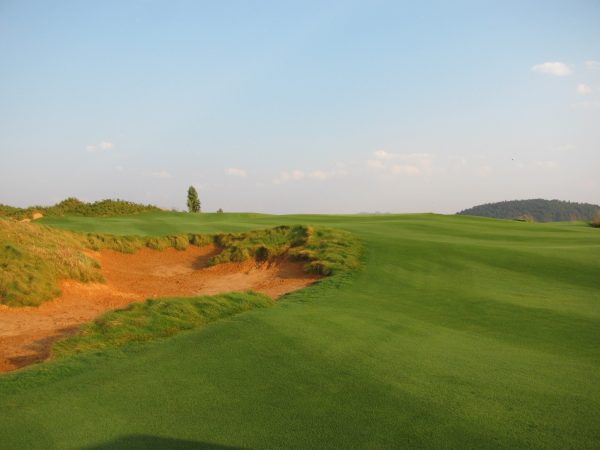
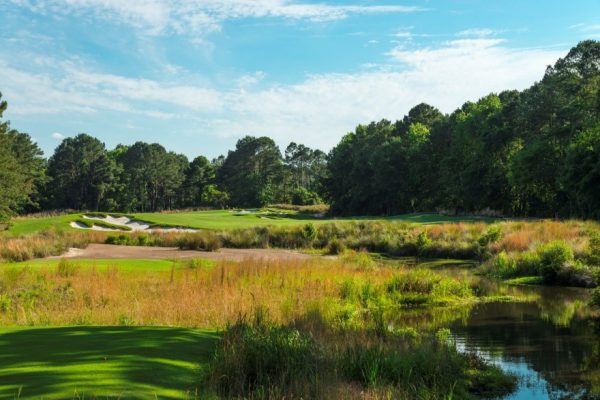
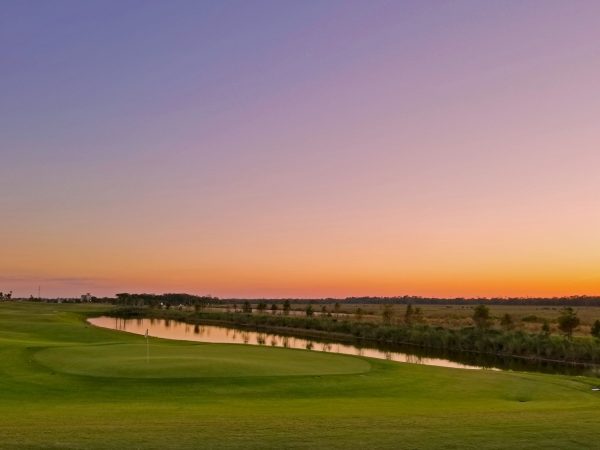
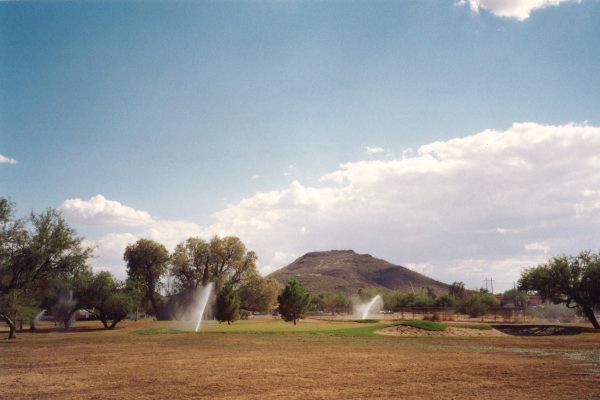
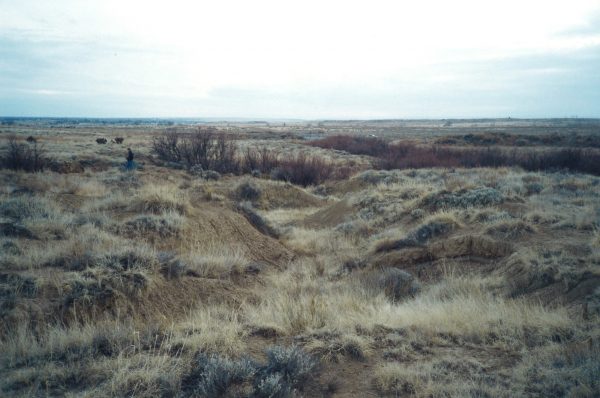
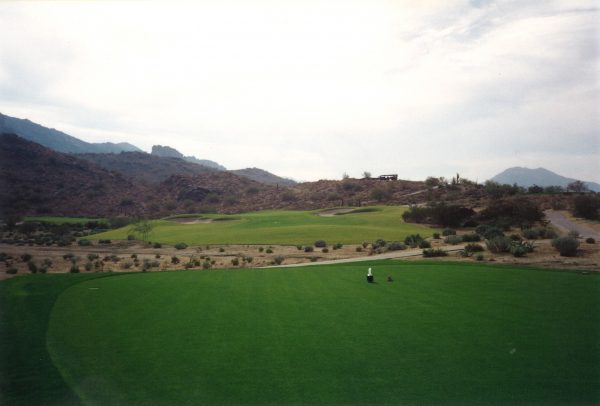





















CP
Jul 19, 2020 at 3:07 pm
Great interview! Johnson answers are so thoughtful and genuine. It would be nice to see pictures of each of the holes he talks about so we could see the features he mentions.